Best Headphones for Mixing and Mastering: The Ultimate Buyer’s Guide [2023]
This article is also available as a video and podcast episode.
Introduction: Why You Should Mix in Headphones
In recent years, I’ve become a big evangelist for headphones. And I’ve been on a mission lately to find the very best headphones for mixing.
Not long ago, most audio professionals would have discouraged you from mixing in headphones. But today, some of the very best in the world are doing it.
Major, platinum-selling mixers like Manny Marroquin, Ariel Borujow and Andrew Scheps have become converts who believe that headphone mixing is a viable way to go at the very top levels in the industry. And they are not alone.
It’s not just in mixing, either: High level mastering engineers like Glenn Schick, Brian Lucey and Gavin Lurssen are even mastering in headphones. I’ve been known to master in headphones myself—and with headphones that are more affordable than you might think.
So what has changed?
There’s simply no denying that headphones are better today than they ever have been in history.
Once you start spending $300 or more, there are some models out there with surprisingly flat mid and high frequency response.
There are even some select headphones that have shockingly good low end these days—sometimes deeper and more revealing than what you’ll find in many studios.
At the same time that headphone quality has improved, audio engineers and music producers are often finding themselves working in more compromised listening environments than ever. And the harsh reality of makeshift studios is that room has even greater impact on your monitoring than the speakers themselves.
Whether you are spending $300, $3,000, or beyond, headphones can potentially perform even better than speaker setups at the same total budget, especially once you start taking the cost of treating the room into account.
Before we get into ranking my top picks, which includes brands like Audeze, Neumann, Focal, Blue, Beyerdynamic, Sennheiser, Sony, Steven Slate, Shure and Audio-Technica, I want to help drive home the case for why you should probably get yourself some better mixing headphones.
Some Real-World Examples
I can’t hammer this home enough: When thinking about monitoring, most new mixers drastically under-estimate the sonic impact of the room that they are working in.
If you ever take a moment to study the measurements or doing some listening tests for yourself, there is no question that the room you’re listening in has a bigger impact on what you are hearing than what speakers you use.
The kind of bedrooms, living rooms, home offices, dens and repurposed garages that so many producers and engineers work in today just aren’t ideal listening environments until you put a lot of work into them.
Problems like flutter echo and comb-filtering and lack of accuracy and consistency in the low end are among the top reasons your mixes might not translate well to other environments.
To make it so that your room is even worth putting nice speakers in, you might be required to spend $1000-$3000 in acoustic treatment and room correction. And even then, your results may not live up to the results engineers in generations past were able to get in purpose-built rooms.
Because of this, high end headphones can be an even better option for many of us than studio monitors.
If you had a professional-level budget of $4,000 or $5,000 to devote to monitoring, you could certainly get yourself some pretty darn good speakers…
….But those high-end speakers would be almost worthless for mixing if you set them up inside of a gymnasium!
A $300 set of speakers in a great room will generally be easier to work on than a $5,000 set in an infuriatingly bad space.
By opting for cheaper speakers in a better-treated room, you’d have more accurate low end, more trustworthy mids and highs, a more reliable stereo image, and a better sense for how wet or dry your mix really is.
This same reality also greatly favors mixing in headphones today, where we can take the room budget out of the equation, and get some of the best headphones ever made for a price lower than their equivalent level in studio monitors.
For example: Allocating $4,000-$5,000 for a speaker-based listening system could get you a pretty decent amount of acoustic treatment for your room, along with a pair of affordable pro level monitors, and some good room correction software.
But that same $4,000-$5,000 could get you some of the best headphones ever made. We’re talking about headphones that could potentially give you results similar to a finely-tuned mastering room that cost tens of thousands of dollars or more to develop.
Similarly, $1,500 could get you a decent amount of acoustic treatment and still save you $500 or more to spend on some entry level studio monitors that you could do some good work on.
…But $1,500 spent on headphones could get you some truly amazing “cans” that are capable of performing as well as speaker-based solutions that might cost you thousands more in total.
Meanwhile, $300 could get you acceptable entry level monitors in an untreated room… or $300 could get you some seriously pro headphones that you could make some really reliable choices on, right out of the box.
In my experience, below that $300 price point, it’s rare to find headphones that will give you enough trustworthy information about the lows, along with flat enough upper mids and highs to make solid critical listening decisions with ease.
With that said, if you apply enough time and effort, it’s possible to learn to mix on practically anything… including headphones that are far from flat. (As Andrew Scheps does.)
But I believe that at $300 up to $1500, it’s much more likely that you’ll get headphones that will allow you to make excellent, confident decisions about what you’re hearing right out of the box, with a much more minimal learning curve.
Because of this, we are only going to look at headphones in the $300 and up category today, focusing primarily on open-back models. This is where I am most confident you will find options you can really trust without fuss.
If this article is useful to you, please consider clicking on the affiliate links scattered throughout. It really helps us deliver these useful buyers’ guide, to you without having to bring on sponsors for them that might compromise our neutrality on the subject.
Skip the Introduction, Get Me Right to the Headphones!
OK, fine, you’re already sold on the idea of mixing or even mastering on headphones. What are the best ones?
Let’s go through all the most popular models from most to least expensive, with my recommendations and notes on each.
Audeze MM-500 — Winner: Best Overall ($1,699)
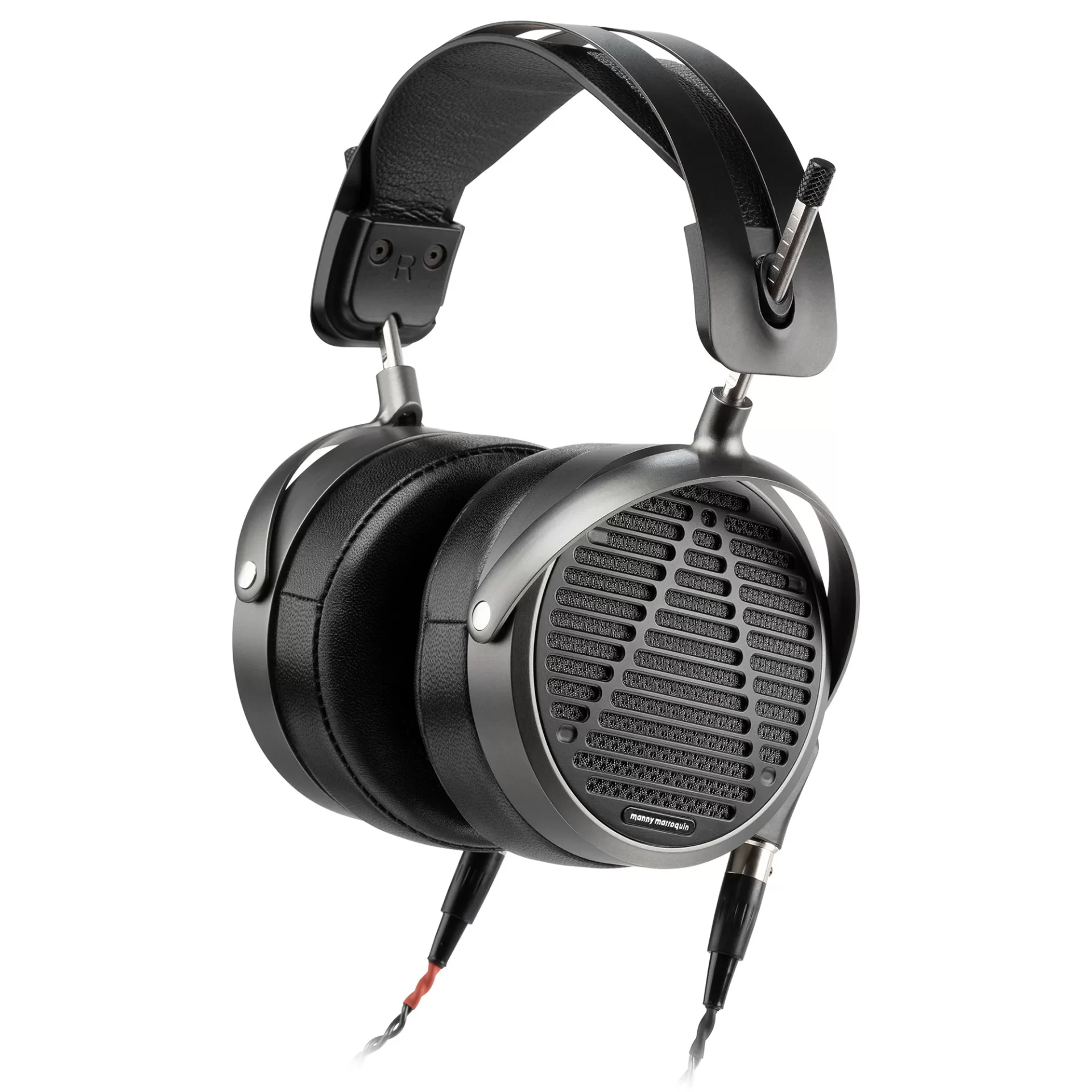
Audeze MM-500
Buy it new on Sweetwater, B&H, Thomann, or Amazon. Look for deals on Reverb.
I still remember the first time I heard a pair of Audeze headphones. When I put on their then-flagship LCD-4 headphones for the first time, my jaw dropped from its hinge:
“No headphones have any business sounding this good” I thought to myself.
It was an experience unlike any other I had up until then. It was (and still) is the closest I’ve ever had to the feeling of sitting in a high end mastering room, without being in one.
Many pro studios I have been in didn’t have monitoring that sounded this good, this detailed and this useful.
The only catch? ..Those high end LCD-4 headphones cost about $4,000!
Enter the MM-500. Designed in collaboration with multi-platinum mixer Manny Marroquin, they perform to a level that is truly on par with high-end speaker systems, at a price that is much more reasonable for most.
These aren’t the highest-end headphones that Audeze make (or the least expensive), but for most serious producers and engineers, this model will probably be the sweet spot.
Thanks to their planar magnetic design, open back and large ear cups, the MM-500 give a truly speaker-like impression in sound, complete with shockingly useful and trustworthy low end, way down into the sub region.
These headphones sound “open”, pretty and un-fatiguing, but without sounding hyped or overly attractive.
Most of all, I just can’t overstate how incredibly revealing these headphones are when it comes to low frequencies and transients. It’s hard to find headphones with bottom end this good!
The MM-500 are rare breed in that they are extremely useful, honest, and fun to listen to at the same time. Their low frequency response and transient accuracy makes these mastering-grade headphones in my opinion.
When listening to the MM-500 back to back with Audeze’s $4,000 LCD-4 or $4,500 LCD-5 headphones, I have to admit that those higher-end models just slightly eek out the MM-500 for sound quality and audio fidelity. But if you don’t have those models on hand to compare against, you’d probably never know what you’re missing.
Even now, listening to these Audeze headphones in my studio today, I find it hard to believe that they can be improved upon. I find myself thinking “how can headphones possibly sound better than this?” …Even though I’ve heard their higher end models back to back in person!
At this point however, it is worth mentioning that headphone selection is an incredibly personal choice, and what suits my ear the best may not be the model that gets you the best results.
Also available in this price range from Audeze, with a slightly different sonic profile, are the LCD-X. These are another new favorite of a growing number of professional mixers. They don’t sound quite as “pretty” to my ear. (And they are bit less like the high end LCD-5 headphones that the MM-500 are loosely based around) But I believe they can also be an even more useful choice if they happen to suit your ear better.
From my own listening, and from the frequency charts I could find online, I believe the LCD-X have a bit less upper midrange detail, slightly less low frequency extension, and slightly slower transient response than the Audeze headphone models I most preferred. But they are also very damn good, and depending on tastes, you could end up preferring them, or get better results with them.
In short, if you want a headphone that sounds slightly darker and thicker, and that might encourage you to cut a bit more low midrange and upper bass in your mixes, or that might inspire you to push a bit more brightness and upper mid, then the LCD-X could help lead you in the right direction.
On the other hand, if you find yourself erring toward scooping mids a bit too much and occasionally find yourself adding excessive sparkle, air and boom to your mixes, I’d wager the MM-500 would suit your tastes better.
My only criticism of the Audeze line is that their headphones are a little large and a little heavy compared to the others on this list. They are also arguably a tad less stylish. Their highest end models do offer some stunning wood grain finishes, but it’s their clunky form factor that deducts some style points.
With that said, the entire Audeze line is still lightweight, comfortable and attractive, and feel like truly luxury headphones. But Audeze are more a hair more willing to compromise on weight and aesthetics than other brands other brands in order to avoid compromising on sound quality.
If looking great on camera was my goal, I might opt for a different pair. But if getting the best possible listening experience was the goal, it’s simply hard to top these headphones.
Audeze MM-100 — Runner Up: Best Overall ($399)
New this year from Audeze are the remarkably less expensive MM-100. This reduced price version of the MM-500 that goes for just $400.
While the prototypes I heard didn’t dazzle me quite as much as the 500 model, they are still easily among the very best headphones in their price range, and I understand that the production models have been even further improved from the prototypes I heard.
Look out for the possibility that the MM-100 could become among the best selling pro studio headphones in the world if Audeze can effectively spread the word about them.
There are a few other headphones in this price range that are also worth a look that we will get to further down, that are winners in different categories.
Focal Clear Pro MG — Winner: Best Style and Comfort ($1,199)
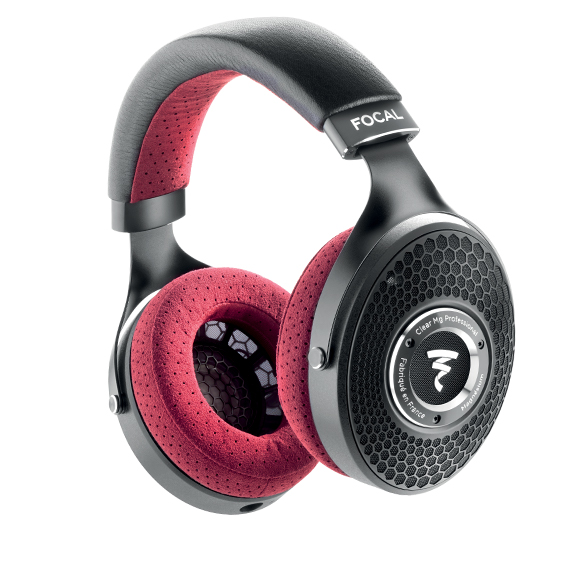
Focal Clear MG Professional
Buy it new on Sweetwater, B&H, Thomann, or Amazon. Look for deals on Reverb.
If the Audeze headphones didn’t exist, the original Clear Pro and the new Clear MG Professionals might be my own personal favorites on this list. And depending on your personal tastes, if you give them a try, they might be your own favorites!
Where the Focal Clears absolutely have the Audeze headphones beat in my book is in style and comfort.
There is no question to me that the Clear are just better-looking, less bulky, less utilitarian, and a bit lighter, softer and easier to wear for long periods. A little flash of red helps them make a statement without standing out excessively. These are truly beautiful headphones to put on, and even unboxing them was an experience that made me smile.
The sound of the Clear series is pretty incredible as well.
The low end here is once again fantastic, which is another reason these headphones earn an undisputed top slot on this list. Their low frequency extension, lack of resonance and the sheer usability of the bottom end are huge points in favor of these headphones
To me, they are just a tad bit smoother and thicker sounding than the Audeze MM-500, with a tone somewhere in between the MM-500 and LCD-X.
One of the things that makes them so fun and smooth to listen to is that their upper mids and highs aren’t perfectly flat. (Though no headphones are.) There is a slight dip in the 3kHz region, along with a gentle lift around 10kHz, which makes these headphones exceptionally pleasant and un-fatiguing to listen on for long periods.
The only thing to beware of is that they might sound a little too smooth and pretty at times, failing to reveal harshness in the 3kHz, area if you’re sometimes inclined to boost that area too much.
As with all monitoring systems, an attractive sound can be both a blessing and a curse, and you’ll want to be sure to find headphones that suit your tastes biases.
If you’re the kind of person who isn’t putting enough upper mid excitement into your mixes and could use a little encouragement there, the Focals could help you with that. And of course, EQ correction like Sonarworks could help flatten out this region further if you loved everything else about the headphones except the pleasant-sounding tilt of the top end.
Focal also makes a much more affordable closed back model the Listen Pro which are only $239, and easily among the nicest closed-backs in that range.
Beyerdynamic DT 1770 and DT 1990 — Runner Up: Best Style and Comfort ($529)
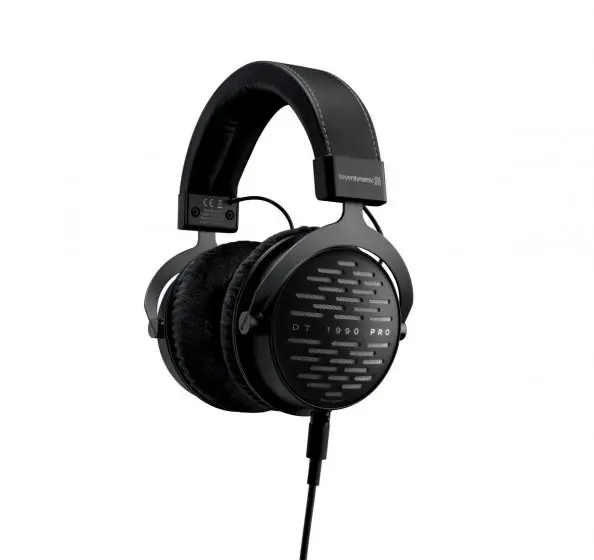
Beyerdynamic DT 1990
Buy it new on Sweetwater, B&H, Thomann, or Amazon. Look for deals on Reverb.
I can easily understand why Beyerdynamic have such loyal and dedicated fans. The open back DT 1990 and closed back DT 1770 are easily some of the best designed headphones for under $1,000 when it comes to aesthetics, comfort, style and listening pleasure.
Even the less expensive DT 700 and DT 900—which are half the cost at $269—feel and sound much more like high-end luxury headphones than anything else in their price range. The earcups, the build quality, the sound, everything in here just feels good.
Their only potential weakness is the same as the even higher-end Focals: They sound so pleasant that they might take slightly longer to learn than some even flatter-sounding models.
The open back DT 1990 and DT 900 for example, had a little dip around 4kHZ-5khZ as well as a lift up around 8kHz-9kHz from my listening tests, and frequency charts I could find online.
If this subtle tilt suits your biases and tastes by encouraging you to push a bit more upper-mids and a bit less low-highs than you otherwise might, they could be a great fit for you.
If not, a little learning, or some recalibration with Sonarworks software could make them perfectly suitable for you.
If you’re looking for headphones with a true luxury, high quality feel at a reasonable price point, these are a great bet.
Neumann NDH 30 — Winner: Most Useful / Best Midrange ($649)
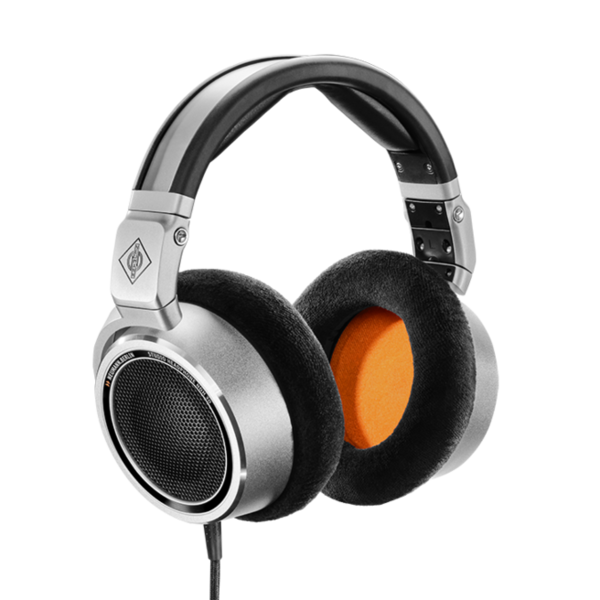
Neumann NDH 30
Buy it new on Sweetwater, B&H, Thomann, or Amazon. Look for deals on Reverb.
There was a lot of excitement around the release of the Neumann NDH 30 headphones. Their prior NDH 20 model are easily some of the best closed back headphones I’ve ever heard, with very good low frequency response for headphones. And, their line of studio monitors is earning much-deserved accolades.
So, do the NDH 30 live up to the hype?
Yes…. But they win by not being hyped at all when it comes to sound.
Where the prior headphones on this list so far have earned their spots for being luxurious, fun to listen to and useful, the Neumann NDH 30 model zeros in on what is probably the most important part of the puzzle: Sheer Usefulness.
Relative to the other headphones on this list, the NDH 30 were the least “pretty” and “hyped” sounding. But that’s not a bad thing at all. The words I’d use to describe the NDH 30 are “flat”, “accurate”, “revealing”, “unhyped” and “helpful”. When it comes to getting good mixes without fuss, these are probably some of the most important things.
These headphones also cost about half as much as some of the other top picks on this list. But when it comes to helping you get a mix that actually sounds great, they are easily one of the top performers. For my own personal use and tastes, I would probably put these second on my own shopping list, right after the Audeze MM-500.
Relative to the the Audeze, the NDH 30 have slightly less low end extension, as well as slightly less high end sparkle and detail. But they also have an even more neutral and “unflattering” midrange. (In a good way.)
Just like a pair of Auratone speakers brings the midrange into focus with incredible detail and great transient response, so too does the NDH 30. But they do it with much deeper low end than a pair of Auratones could ever have, as well as better high end extension, and without the impact of your room factoring into the equation.
Don’t expect these to headphones to be “dazzlling” in a quick sip test. Expect them to be honest with you, and to help you figure out exactly what you should be doing in the mix. If I was going to spend under $1,000 on a pair of headphones, this would be a very strong contender for my own personal top slot.
I believe that these headphones may quickly start to take market share from the venerable Sennheiser HD-600 and 650, which have equally useful mids and highs, but without the bottom end performance of the Sennheisers.
My only criticism is that I’m not a huge fan of the look of silver headphones…but these ones get a pass. The orange driver covers look really cool though. Bonus points for that.
It is also worth noting that these are probably the quietest headphones of all the ones I tried, but this shouldn’t matter if you are using any commercially available audio interface.
Testing them with an inexpensive Focusrite Clarett interface, they could get plenty loud. I just had to turn the dial up to 1 o’clock instead of 10 o’clock.
If you plan to use these with a phone that has particularly low output, then maybe they won’t get quite as loud as you want. But even there they should probably be just fine.
Sony MDR-MV1 — Runner Up: Most Useful ($400)
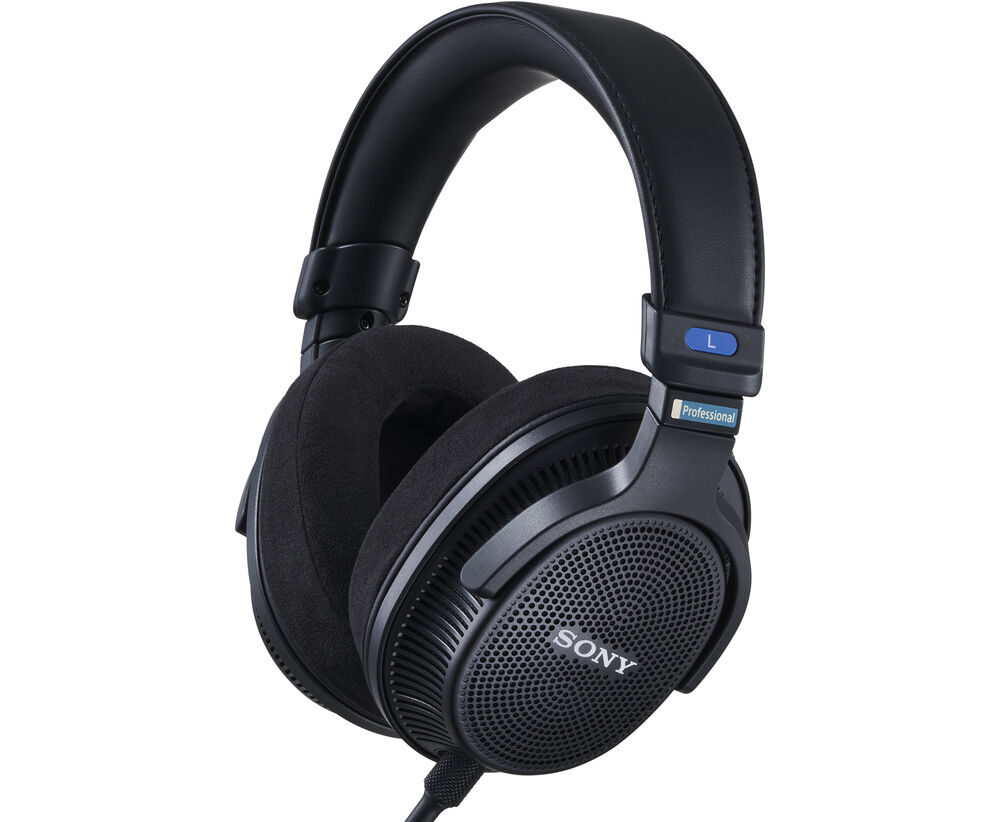
Sony MDR MV1
Buy it new on Sweetwater, B&H, Thomann, or Amazon. Look for deals on Reverb.
Sony headphones are back, and in my opinion, better than ever with the MDR-MV1 line.
Although I’m not a huge fan of the classic MDR-7506 headphones for mixing because they are a bit too bright and hyped for my personal needs, they are great tracking headphones in my book. And there is no doubt that they are some of the most popular pro headphones in history, with a countless number of die-hard fans.
(Plus: Andrew Scheps mixes on them, so who am I to argue? I have a personal soft spot for the smaller and less hyped 7502 headphones, as well as consumer Sony walkman headphones, both of which I used as a secondary mixing reference for years.)
The new MDR-MV1 have some of the bold and exciting sound of the MDR-7506 headphones, while being more neutral and more useful for mixing and critical listening. They struck a nice balance with a sound that will be immediately familiar and satisfying to those who have loved Sony headphones in the past, without going overboard with too much of a sonic signature.
The low end is great here, as is the high frequency detail. They are perhaps slightly soft in the low and center mids, which helps give them a slightly more scooped and bombastic sound than the Neumanns that won for my personal top pick in this category.
For those who want a mixing headphone that is flat enough to make great critical listening decisions on, and exciting enough to make the process of mixing fun and inspiring, these could be a great way to go.
The only weakness of the build is also one of this model’s greatest strengths: these headphones are remarkably light. Like, crazy light. They are easily the lightest of the bunch that I tried. At first touch, it made them feel flimsy to me. But the more I listened, the more I came to appreciate it. You barely know they are there! You could wear these all day and never feel it.
Another advantage is that a select number of studios are certified by Sony to help you create a personalized HRTF profile for these headphones, making them even flatter and custom tailoring-them to the way you hear.
Austrian Audio Hi-X60 and Hi-X65 Winner: Best Small Profile Headphones ($429)
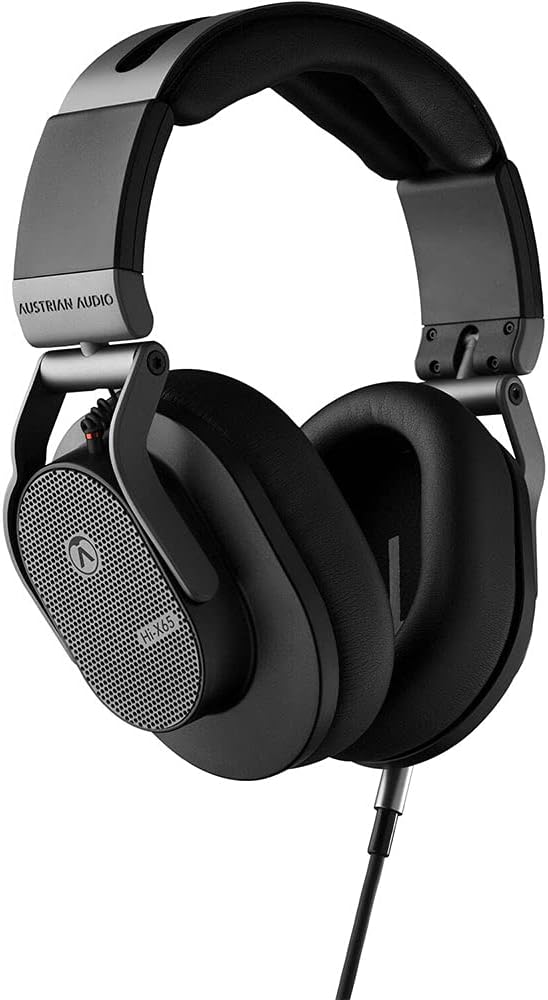
Austrian Audio Hi-X65
Buy it new on Sweetwater, B&H, Thomann, or Amazon. Look for deals on Reverb.
The Austrian Audio’s Hi-X60 closed back and Hi-X65 open back headphones have one big thing going for them that most others on this list don’t: They’re small.
These are easily the most compact high performance headphones on this list. The only others that come close are the Sony MDR MV1 and the Slate VSX, and both are considerably larger.
For my tastes, these have the best visual appeal for those who need to be on camera for streaming, podcasting, recording sessions, video interviews and the like—especially if you are a smaller person or have a smaller head.
No joke, this is something that a lot of people just don’t think about until they buy their headphones and look at themselves in the mirror. And depending on what you’re doing, it can matter!
Additionally, both these headphones sound good. The Hi-X60 are among the better sounding closed back headphones that are out there, nipping at the heels of the more expensive ADAM and Neumann closed back models. While they are not flat (no headphones are, closed back models in particular) they are pleasant and useful and a solid contender for the style at any size or price.
The open back Hi X65 are clean and fairly flat with revealing midrange. But they do have a distinctive sound. There’s a certain “thwack” or meat to center midrange that I don’t hear in other models. It seems like a bit of a lift up around 300-400Hz and 700Hz-800Hz and maybe a bit of a dip a bit further up.
They were certainly unique and not voiced like any other brand of headphones I’ve encountered. If you’re looking to be led in the direction of getting cleaner more open sounding mixes, these could help you go there, in a way that sweeter and more low mid “scooped” headphones may not.
Slate VSX Headphones — Winner: Most Innovative ($299)
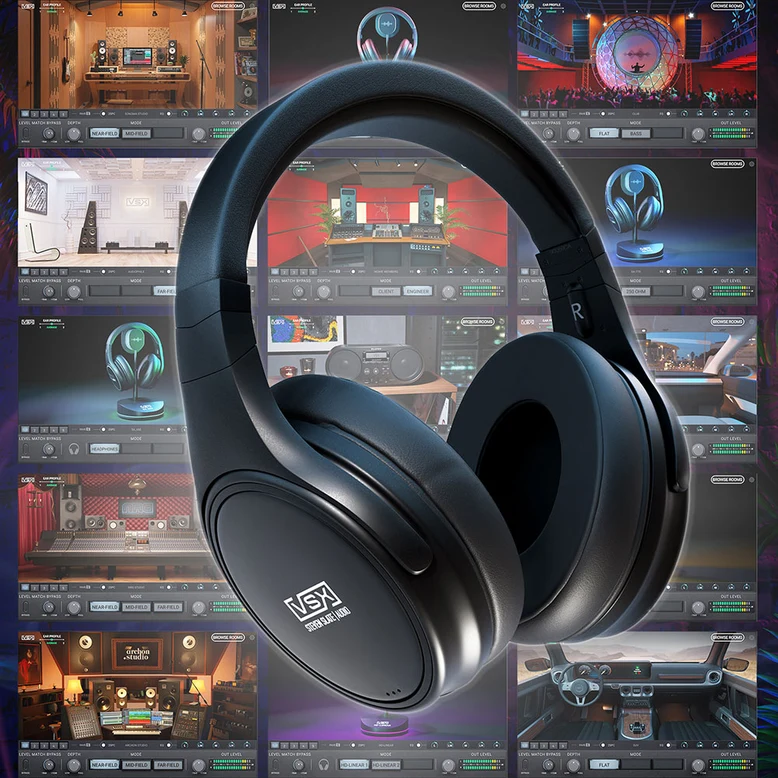
Slate VSX
Buy it new on Sweetwater, B&H, Thomann, or Amazon. Look for deals on Reverb.
The Slate VSX headphones are unlike anything else on this list.
By themselves, they are a fairly good sounding pair of headphones, with surprisingly good low frequency extension for their price, though perhaps a bit dark sonding…
…But you’re not supposed to use them by themselves!
What makes these headphones shine is the included software, which can used as a plugin in your DAW or a systemwide plugin.
The basic flat “linear” version of these headphones makes them perform incredibly well for $300 headphones by themselves. But the most unique feature is the ability to audition your mixes in a variety of environments from high-end studios to cars to other models of headphones.
These sound and work way better than they should for $300, and there’s no question they beat out basically any headphones that cost less.
My only critique is that the amount of choice you have in the software is potentially overwhelming. It’s probably better to deeply learn 1 to 3 playback systems than the potentially dozen or more that you can have access to in this software.
I’m also not sure I’d love having a pair of headphones that was tethered to software, but it doesn’t seem to bother the countless lovers of this solution.
These are a very remarkable and unique option. They don’t quite have the transient accuracy of the highest end models available, but their frequency response can be fantastic with the appropriate models applied.
Honorable Mentions
Blue Mix-Fi — Runner Up: Most Useful / Best Low End $300
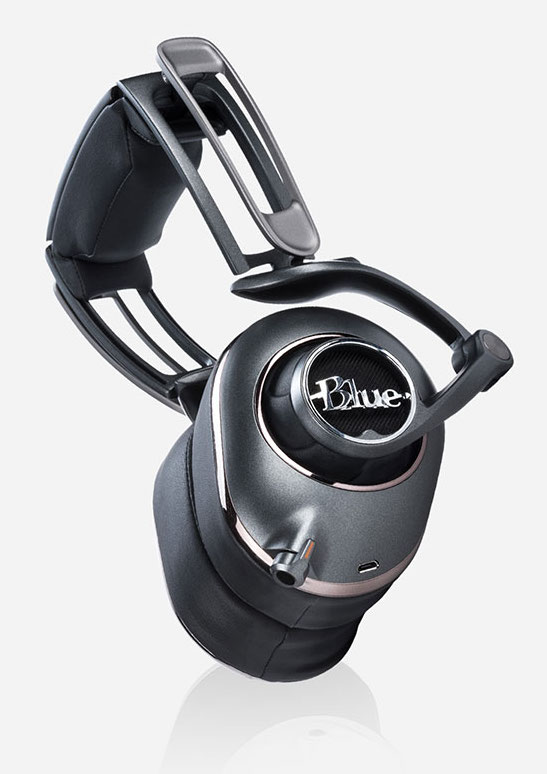
Blue Mix Fi
Buy it new on Sweetwater, B&H, Thomann, or Amazon. Look for deals on Reverb.
I still love them, but they are no discontinued. You can find pairs of these and the almost identical Lola headphones on the market for very low prices, but note that covering on their earcups is prone to flaking off over time and cannot be replaced.
This aesthetic issue aside, they are great headphones for mixing. Here’s what I wrote about them in our last headphone roundups:
When I first got a demo version of the Blue Mix-Fi headphones to try out, I let them sit on the shelf, unopened, for months. To be honest, they looked a little weird to me. I couldn’t tell if they were open back or closed, and I assumed, based purely on aesthetics, that they would be all hype and no substance. Boy was I wrong.
The Blue Mix-Fi headphones absolutely blew me away from the very first listen. I found this especially surprising because they are nowhere near the most expensive model on this list! In fact, they are among the less expensive entries here. But from moment one, I experienced something that I am not accustomed to on anything but great high end speakers: I could not only hear the bass, but I could feel it.
And I don’t mean that I could “feel” the bass in a “totally hyped up to make you bang your head” kind of way. Not at all. The bass here is remarkably free of resonances for a pair of headphones, and there is actually some truly useful information going on in the low frequencies in these.
I’m not just talking about the upper bass here, either. I’m talking about the very low lows. I was surprised to find that I have come to trust the low end response of these headphones so much that I am comfortable making critical listening decisions about the bottom end in them. This is true even for the subs, down as low as 55Hz-65Hz or thereabouts. This is extremely unusual for any kind of headphone—especially without resonance issues. Color me impressed.
On several occasions, I was able to do mastering revisions using nothing but these headphones—including choices about the low frequencies—and then take them off, only to find that my choices would have been no different on my main speakers. This astonished me more than anything else.
Are the lows perfectly flat? No, the lows in headphones never will be, even if you spend 5 times as much as you might on these. I’d estimate that the low end here is slightly highlighted, if anything. But this feels like a useful feature more than “hype” to me, especially because the lows here are remarkably clean and surprisingly free from resonances. These are indeed some of the most useful lows I’ve ever encountered in a pair of headphones, even when compared to some more commonly encountered models that cost more.
Bottom line: If you don’t want to spend a lot, and your primary need for headphones it to double-check low end in a compromised room, then these are probably the headphones I’d recommend first.
There’s something else that is remarkable about these headphones too: They are technically not an open-back model. Rather, they are what I would call a “semi-open” design. They rely on a dampening system to deliver clean, resonance-free lows rather than an open back. This means that you get some of the extreme isolation from outside distractions that you’d expect from closed back headphones, so you can even record while wearing them without worrying about silly amounts of bleed like you usually would with normal open-back designs.
As mentioned, the Mix-Fi headphones are remarkably inexpensive for their performance. At only $300 they’re among the least expensive entry on the list.
Okay, with all those raves, is there anything I don’t like about them? Unfortunately, yes. I’ll be the first to admit that despite all of these great points that made me fall in love with the Mix-Fi model, they look… well… kinda…. um…. “silly” is the nice word for it.
There, I said it. When I put these things on, I look like an air traffic controller. And as much I respect the company for their novel aesthetics, some of the BLUE designs are just a little far-out for my more “classic-y” tastes.
These are also some of the heavier headphones on this list. Fortunately, thanks to some excellent ergonomic design, they don’t feel uncomfortable at all, even over very long periods. If anything, they feel pleasantly “substantial”, and I found that I can wear these for hours without issue. I would just keep the headbanging to a minimum.
Of course, all these are my personal aesthetic judgements, and yours may be different. They’re not deal-breakers, even for me. And if you have more futuristic tastes (or a slightly larger head) than I, you may find that the look of them suits you just fine. But as far as my tastes go, I only wear these in the studio. I just wouldn’t feel right rocking them in the street or on the subway. But maybe I’m a square.
Finally, for some tastes, the top end on these could seem a little bit dark—particularly with the amp turned off. But for me, this is a feature rather than a bug, especially when it comes to long stretches of critical listening.
If you like the idea of a dark and smooth top with full low end, which reveals lower bass problems while encouraging you to push the top end a bit more, then these could be great for you. But each person’s tastes are different, and if you prefer a little bit more clarity, detail, and sparkle on top, you might prefer other headphones on this list.
Blue has also more recently developed a planar magnetic version of this design, called the Ella, that sounds superb. It’s also slightly smaller and lighter weight.
The Ella has even more high frequency detail than the Mix-Fi while still sounding exceptionally smooth. The bass is extremely even on the Ellas, though perhaps slightly less pronounced than in the Mix-Fi. The Ella model may be slightly more “expensive”, “smooth” and “even” sounding—with the tradeoff being that it lacks just a little bit of the beefy, subby fullness of the Mix-Fi, which I found to come so much in handy as a secondary low end reference.
Although the Ellas cost more than twice as much, but if I was listening only for fun, I’d have to admit they sound “better” in some ways. But even with this in mind, I still find the Mix-Fis exceptionally useful, their value is hard to match, their usefulness in double-checking deep lows in compromised environments is superb, and I won’t be giving mine up anytime soon.
There are a few other great attributes to both models, such as the cabling, and the fact that they give you an optional 3-ring 1/8″ connector complete with a microphone and volume control for use with your smartphone.
Theoretically, the built-in amp is nice to have for use with smartphones and the like, but I found that he Mix-Fi could get more than loud enough without it, and I actually preferred the slightly mellower and low-end focused tone of the headphones without the built-in amp engaged.
[Note: There’s also a less expensive version of the Mix-Fi, called the Lola, but these appear to be being phased out, as they are no longer referenced on Blue’s website. The Lola model goes for at least $50 less where you can still find it. They are practically the same as the Mix-Fi, aside from the omission of the onboard amp found in the Mix-Fi model—which I don’t use anyway. If you want to save a few bucks, they could be a good buy.]
Pros: Great value, amazing low end for headphones. Offers the resonance-free performance of open-back coupled with acoustic isolation of closed back.
Cons: Unusual “love it or hate it” aesthetic design, Somewhat larger and heavier than other options. Could sound a little “dark” in the top end for some tastes, particularly without the built-in amp engaged.
Sennheiser HD650 — Runner Up: Most Useful / Best Value $400 or less
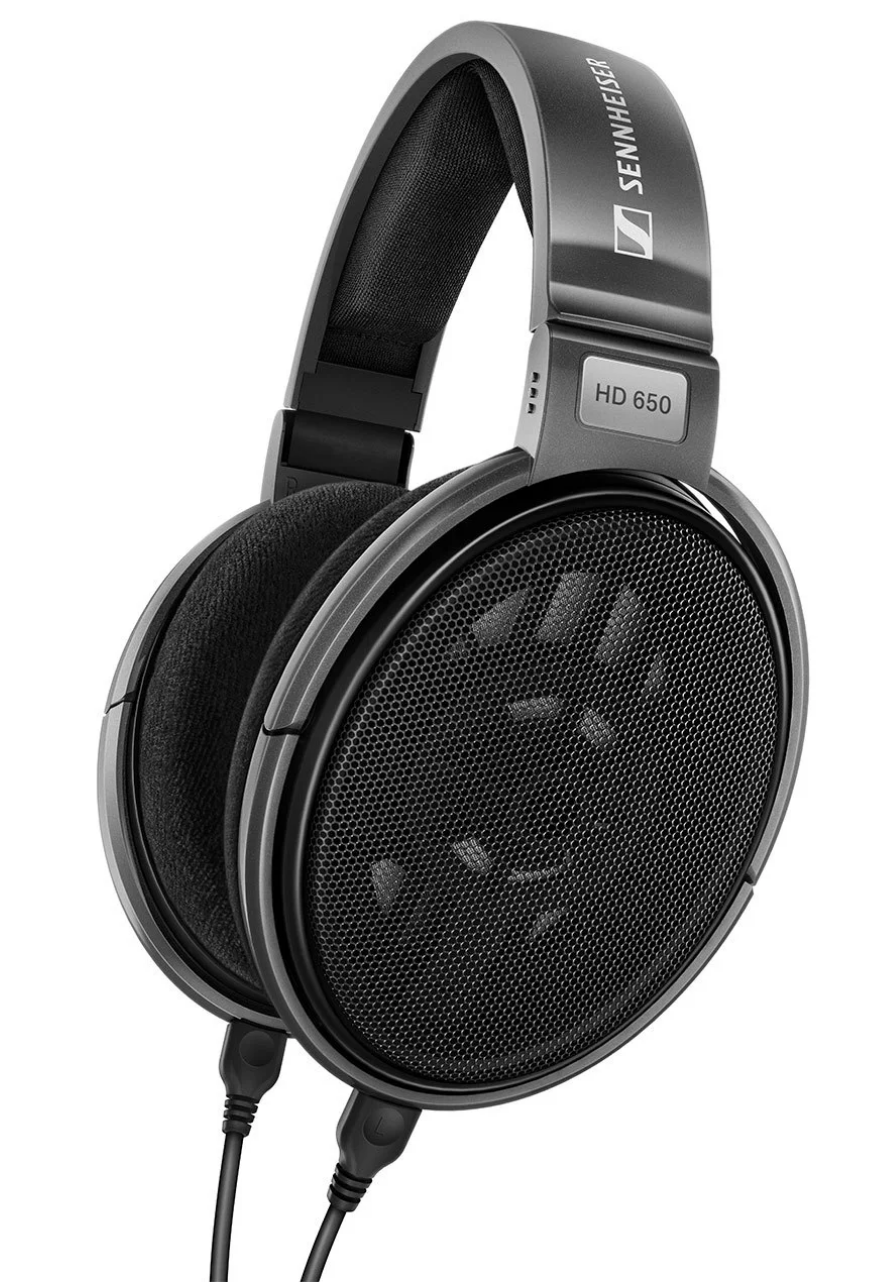
The Sennheiser HD650
Buy it new on Sweetwater, B&H, Thomann, or Amazon. Look for deals on Reverb.
One of the flattest and most neutral headphones I’ve found under $400 so far are Sennheiser’s ubiquitous HD650 Reference Headphones.
I’m seeing a variety of price points on this model these days, from $320 on some sites for the older grey finish, all they way up to $400 at many other music retailers.
There’s also a newer 6XX model that can be found for below $300 but is purported to sound basically identical.
These headphones are popular for good reason. They’re not overly expensive, and they are nearly as neutral out of the box as headphones can come.
These are probably as close to flat as you can get for referencing the midrange and top end, with just a slight dip in the upper mids. (If you prefer a tiny bit more “bite” in the upper mids, the slightly less expensive HD600 is said to have a little more emphasis there.)
It’s hard to go wrong with the Sennhieser HD650. They just leave me feeling a little… uninspired at times compared to other options. They have a higher impedance than many of the other selections here, meaning that they are a little bit on the quiet side without a good dedicated headphone amp, and you may have to crank your level a little compared to some other options.
The HD650 wouldn’t win any contests for being the best looking, most comfortable or most durable higher-end headphones out there, although they are not particularly lacking in any of those departments either. Their design probably doesn’t make them the best travel headphones due their lack of collapsiblity, and the fact that they come with a fairly nice carboard box, rather than a sturdy hard travel case like some of the other options here.
There are a lot of great things about the HD650. If you haven’t heard open-back headphones in this pricerange before, you’ll almost certainly be impressed by how well they perform. If any parts due wear out over the years, replacements are readily available and they are easy to service. These headphones are just very, very good. They are perhaps a little bit on the utilitarian side compared to some other options, but they are an unmistakably great value, even compared to some similar headphones I preferred more, which we’ll get to in a minute.
The only place where this much-lauded model fails to meet expectations for me is in the low end. They won’t really tell you anything about the subs at all. Below 100Hz, there just isn’t much information there, and the upper bass from 100-200Hz+ is a bit over-represented by comparison, making them less than ideal for those looking for a low-end doublecheck out of their headphones.
To be fair, this is a tall order for any headphones, and only a handful, like the Blues, Focals and maybe the Shure SRH1840s (which we’ll get to next) have a significantly more pleasing and more useful low end to my ear.
Ultimately, it depends on what your needs are. If you have a great speaker system to rely on for low end, and you don’t need headphones to serve as an additional low frequency check, or as an on-the-go solution for low-end reference, the 650s could serve you very well.
Pros: Popular for a reason. Great value. Very even midrange and top end for headphones. Very serviceable, with easily available and affordable replacement parts.
Cons: Lacks low bass, while upper bass is slightly over-represented. Slight dip in the upper midrange requires mindfulness in not overboosting those frequencies. Not the best option for travel due to design, lack of hard case and durability concerns.
Shure SRH1840 — Runner Up: Most Balanced / Best All Around ($500)
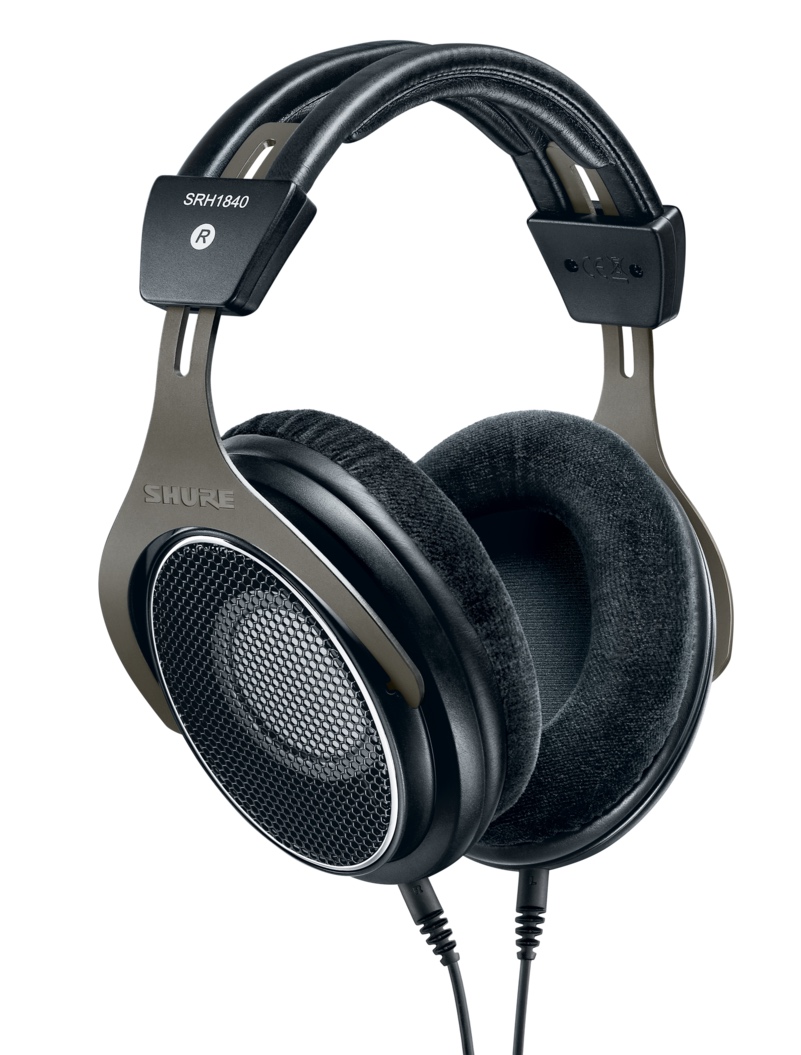
Shure SRH 1840
Buy it new on Sweetwater, B&H, Thomann, or Amazon. Look for deals on Reverb.
Another pair of headphones that really stood out to me in my tests was the Shure SRH1840 model. In my estimation, these are like an all-around “better” version of the Sennheiser HD650s, and offer a lot of the best qualities of other models mentioned earlier in a single package.
These are truly one of the best balanced options in the headphone world, and I was surprised by how much I liked them.
The SRH1840 headphones have extremely useful low end, though they may have slightly less energy in the subs than the Blue Mix-Fi.
Like the Focal Clear Pro, they have an extremely comfortable feel, a smooth and non-fatiguing sound, and a little touch of style, though not quite as much so as the Focals.
They have the neutral and trustworthy mids and highs of the Sennheiser HD650s, and are a good value for all they offer, though perhaps not to the same extent as the Sennheisers.
If you want headphones that have some of the best features of all of the other ones mentioned here, it’s hard to find a model as good and as balanced in that regard as the SRH1840.
At $500, these are not the cheapest nor the most expensive on this list, but if you have $500 much to spend, it’s unlikely to be a purchase you’ll ever regret. If you have trouble deciding between all the models here, and having a super-tight budget isn’t at issue, then just get these. They’re great, and they will not disappoint.
After hearing the SRH 1840, I couldn’t figure out why people don’t talk about these at least as much as the Sennheiser HD650s. Is it just the slightly higher price tag?
Though the value may not as exceptional as the Sennheiser 650s, I have to admit that if someone offered me a free pair of these Shures right now, or a free pair of the Sennheisers, plus $100 cash, I’d probably take these Shure headphones. But your preferences (and the degree to which you could really use an extra $100) may be different! So do what makes sense for you.
One last thing worth noting is that they do come with a nice hard case, giving them a slight leg up in value from where they otherwise might land.
Pros: Excellent sound with useful low end, and neutral but pleasing midrange and highs. Fantastic balance of features for a extremely well-rounded offering. Comes with an attractive complement of accessories, including a hard case for travel.
Cons: Not as affordable as some similar options. The Sennheister HD650 or Audio-Technica ATH-R70X (discussed below) may have a leg up on value for the budget-conscious. They feel luxorious, satisfying and fun compared to other offerings at a similar price point, though not as much so as the Focal models or other offerings from more hi-fi oriented brands.
Audio-Technica ATH-R70x — Runner Up: Best All Around $350
An additional capable pair of headphones that was very similar in design to the Shure SRH1840 but didn’t get quite as high marks in my tests was the Audio-Technica ATH-R70x.
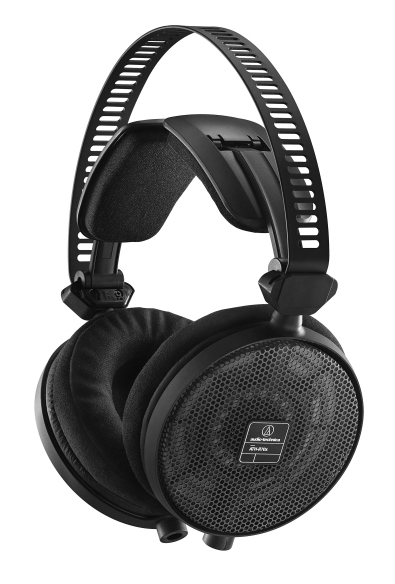
Audio Technica R70X
Buy it new on Sweetwater, B&H, Thomann, or Amazon. Look for deals on Reverb.
First, a word on its strengths: The Audio-Technica R70X were very good-sounding headphones for the price, and there were things I liked about them almost as much as the Shures… just not quite.
Of course, they also cost considerably less than Shure’s similar offering, which could easily tip the scales for some buyers.
They were extremely lightweight and comfortable, and had pretty good bass and fairly neutral top end. They didn’t excel in quite the same way as the Shures for my personal tastes, but for $150 less, they are certainly a worthy contender.
The place where you feel the cost cutting on the R70X the most—fortunately—is in the boxing and accessories, leading to about the most underwhelming unboxing experience of all the models I auditioned in this class.
In Audio-Technica’s defense, this is probably a far better place to cut costs than any others! It just didn’t inspire excitement and confidence in quite the same way as some of the other higher-end unboxing experiences.
Sonically, I’d put them just after the Shure SRH-1840 for my tastes, and perhaps little ahead of the Sennheiser HD 650—depending on what day of the week you ask me. They offered what was potentially a superior low end to the Sennhesiers for my ears, even if they were a shade behind the fantastically even and smooth performance on both bottom and top found in the Shures.
Runner Up: Most Luxurious / Most Fun
Ollo HPS S4 $360~

The OLLO S4
Buy it new on Sweetwater, B&H, Thomann, or Amazon. Look for deals on Reverb.
If you want some headphones that are exceptionally comfortable, light, stylish and fun, but you don’t want to spend $1,500, then the OLLO HPS S4 model might be a good bet for you.
These headphones are actually among the least expensive on this list at just about $350 in USD, but they are appointed like higher-end hi-fi headphones in some ways. They have a classic look with a beautiful walnut wood finish, reminiscent of the Grado line, and they are very lightweight and comfortable.
Though the company boasts about the flatness of their headphones, I found that they were a little bit more hyped than flat in use, though in a pleasing and detailed way. They felt a little bit amped up in both the lows and highs to my ears, which on the positive side, gives them the sense of offering plenty of articulation and excitement.
As far as neutrality is concerned, they are far better than most closed-backed models you’ll find. So if you’re looking for a little style out of your headphones and a little excitement out of their sound without going overboard, then these are a good bet for that. They don’t quite compete with the neutrality of the Sennheisers or Shures, but that’s not what I like about them.
OLLO also offers a closed-back version that I have recently been using on every interview episode of the SonicScoop podcast because of how light and comfortable and good-looking they are. The closed back S4R model make for a superb tracking headphone for a studio that wants a little more style and excitement than the average fare.
Another plus is that the design here is so simple that they are extremely serviceable headphones if you run into issues of wear over time. My one complaint with these is the headband design. They can resonate a little bit if you bump them, and I found the black finish on mine started to peel slightly over months of use. The company reports that they are aware of this complaint and working on fix. Finally, they are not the most collapsible models you’ll find, making them a far better studio model than a travel pair.
Pros: Great style at a good price, excellent comfort, easy to wear for long periods, pleasant amount of sonic hype without going overboard.
Cons: Slight “smile” curve in the EQ is less than ideal for critical listening. Not easily collapsible for travel. Headband can ring audibly if struck. Finish on headband can peel slightly over time.
Final Thoughts
The best thing you can do is try some of these headphones out for yourself. I hope that at the very least, this list helps you narrow down your choices, and and provides some context for making your choices.
Justin Colletti is a mastering engineer, author and educator. He edits SonicScoop and hosts the SonicScoop Podcast. He is the creator of the full-length courses Mixing Breakthroughs and Mastering Demystified.
Please note: When you buy products through links on this page, we may earn an affiliate commission.








